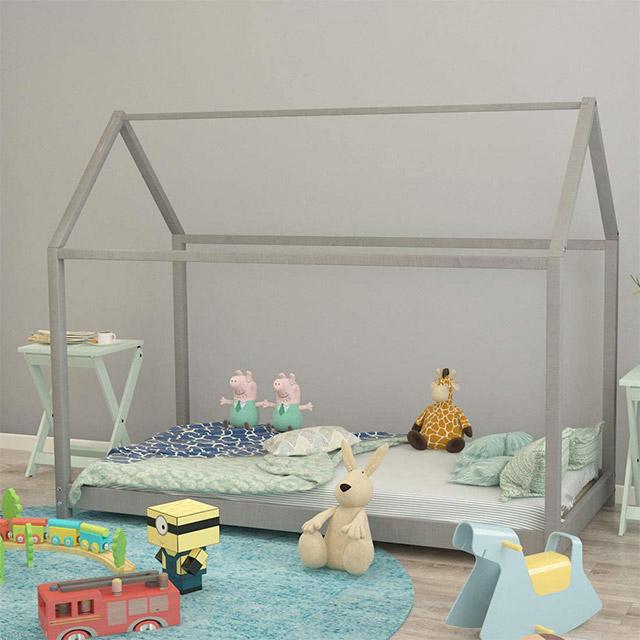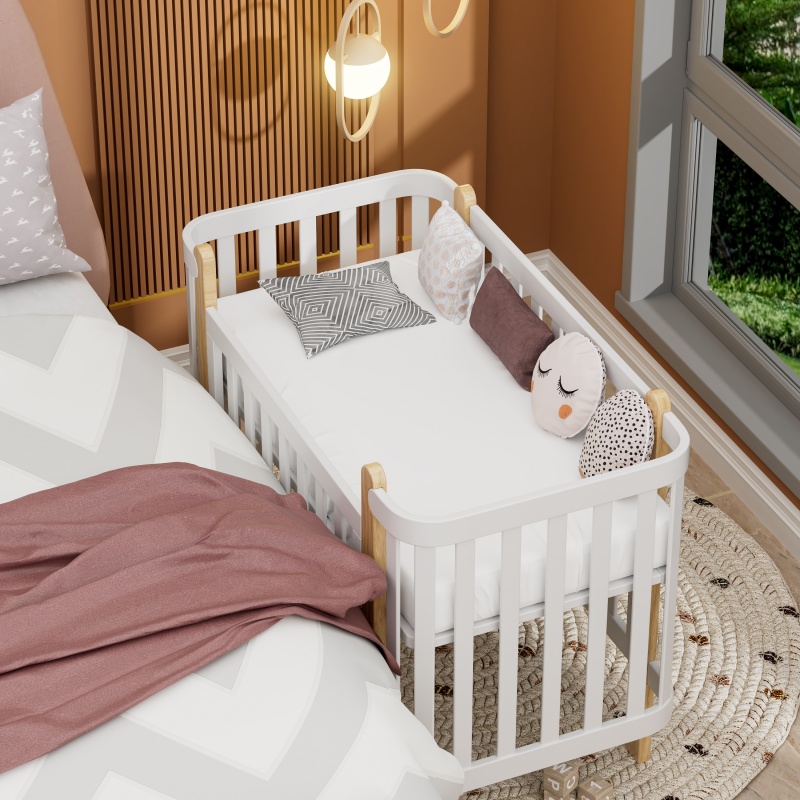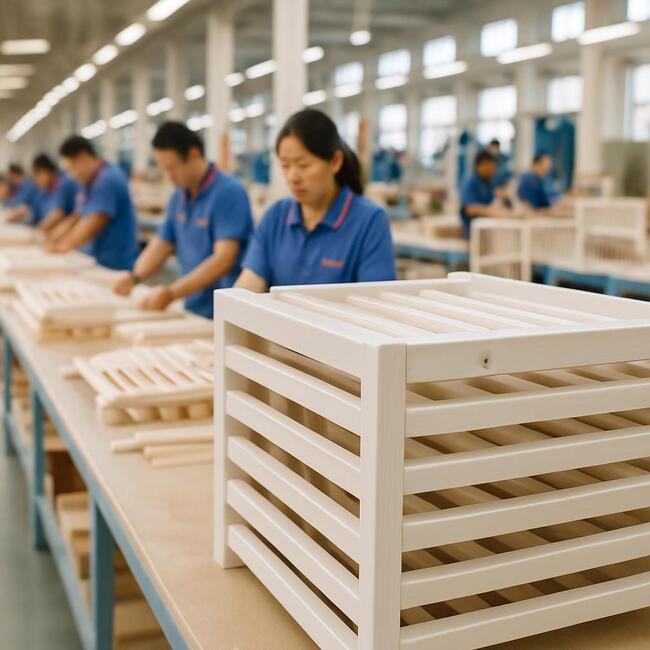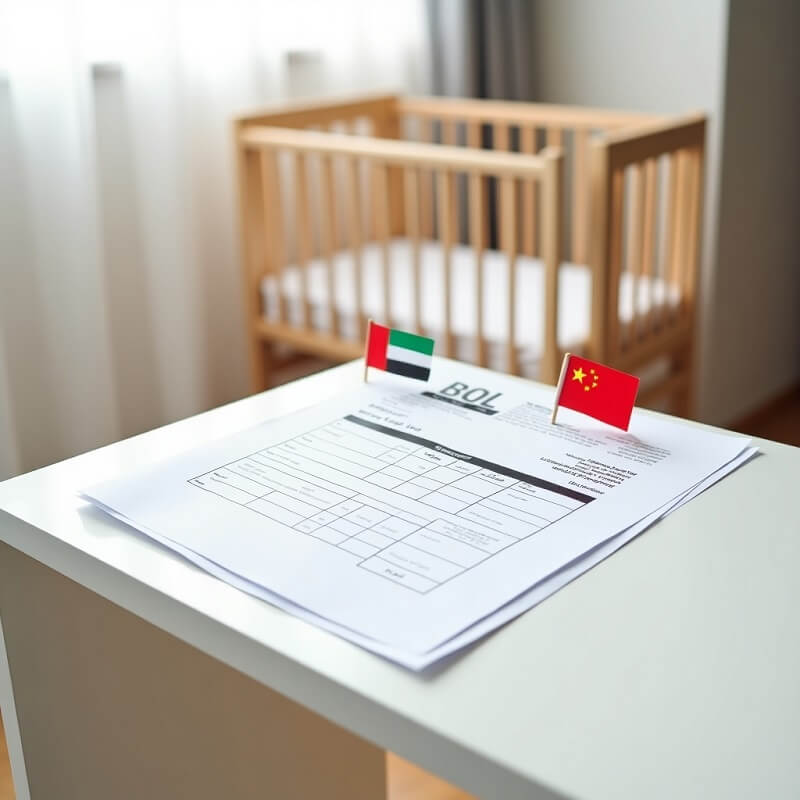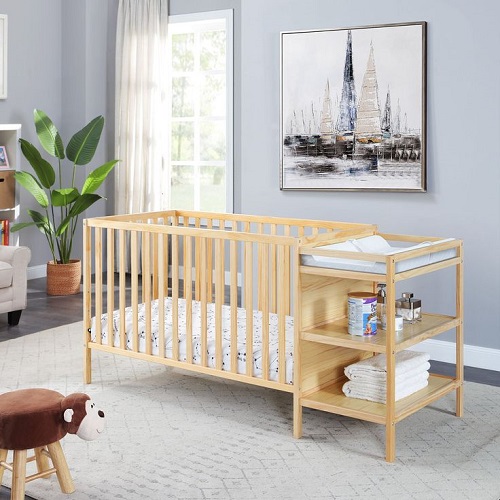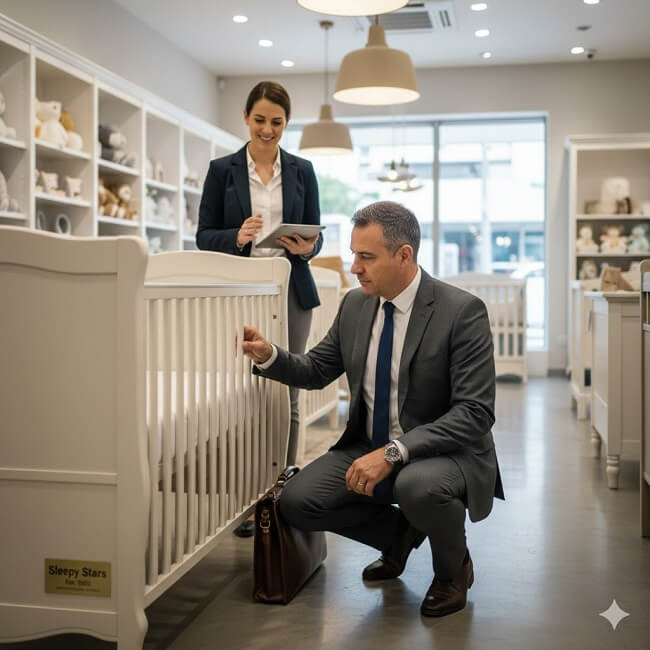If you’ve found yourself scrolling through beautifully curated photos of toddlers’ bedrooms, you’ve likely come across a growing trend: the Montessori bed. These low-to-the-ground, minimalist frames—often little more than a mattress resting gently on a simple platform—seem to promise a world of independence and peaceful nights.
You might be wondering: Is this just another social media trend, or is there real value in adopting this approach for your family?
Sleep impacts everything—your toddler’s mood, learning, and overall well-being, not to mention your own rest. That’s why it is worth taking a closer look at the Montessori toddler bed, exploring what they are and how they differ from conventional sleep setups. And perhaps most importantly, is it worth it for your unique family dynamic?
What Exactly Is a Montessori Bed, Anyway?
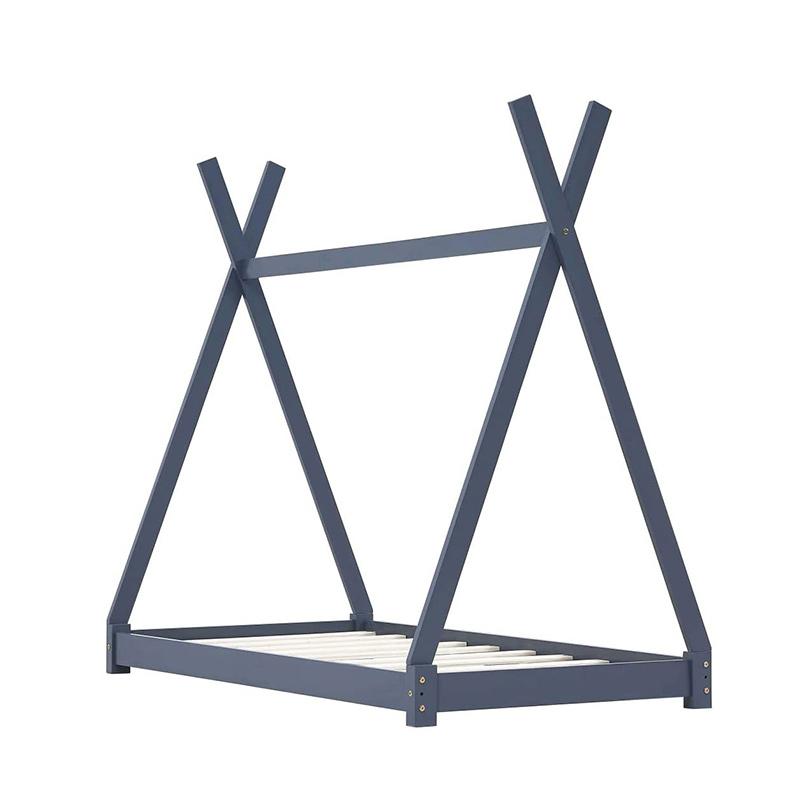
Rooted in the educational approach developed by Dr. Maria Montessori, these beds are designed to empower young children by giving them autonomy within a carefully prepared environment.
Unlike traditional toddler beds or cribs, which often have raised sides and restrict movement, a Montessori bed is typically a low-profile frame placed directly on or near the floor, allowing a child to get in and out independently.
The design is intentionally simple and minimalist. You might picture a mattress resting on a low platform, sometimes with gentle rails for safety, or even just a mattress on the floor within a lightweight frame. The goal is to create a sleep space that is accessible and inviting, removing barriers between the child and their environment.
This approach aligns closely with core Montessori principles, such as respect for the child’s independence and the belief that children thrive when given freedom within limits. By giving toddlers the freedom to climb in and out of bed on their own, it nurtures their sense of independence and encourages healthy self-regulation.
It also often integrates seamlessly into a child-centered room layout, where furniture, toys, and activities are all scaled to the child’s size and abilities.
Is a Montessori Bed Actually Safe for a Toddler?
This is the most critical question for any parent considering this option, and rightly so. When you first see a mattress sitting so close to the floor, it can spark a natural concern about safety.
The answer, like many aspects of parenting, is not a simple yes or no. The safety of a Montessori bed hinges almost entirely on how the sleep environment is prepared, rather than the bed itself.
The most frequently cited concern is the risk of a child rolling out of bed. However, from a purely physical standpoint, a fall from a height of just a few inches is generally not dangerous. In a typical Montessori setup, the mattress rests directly on the floor or on a very low platform, greatly reducing the risk of injury if a child rolls out during sleep.
Many parents choose to place soft, firm rugs or play mats around the bed to create a safe landing zone, further cushioning any unexpected exits during the night.
A more significant safety consideration is the overall child-proofing of the entire room. This means securing furniture to the wall to prevent tipping, covering electrical outlets, ensuring cords from blinds or curtains are completely out of reach, and removing any small objects or potential hazards. The room itself becomes the crib, so every element must be evaluated for safety.
In the end, a Montessori bed can offer a safe sleep environment, but it demands careful preparation and a shift in parental mindset. It swaps the contained safety of a crib’s bars for the proactively secured safety of an entire room. For families willing to undertake that preparation, it can be a wonderfully safe and empowering space.
What Are the Benefits of Montessori Beds for Toddlers?
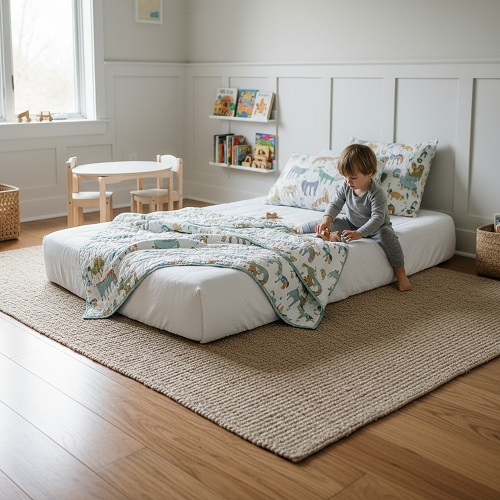
The decision to use a Montessori bed often stems from a desire to extend principles of respect and independence into a child’s sleep routine.
Fostering Independence and Autonomy
A Montessori bed allows toddlers to listen to their bodies—they can get into bed when they feel tired and get out when they wake, without needing to call for help. Over time, this approach can reduce bedtime struggles, allowing the child to feel a sense of ownership over their routine rather than being directed.
Supporting Physical Development and Exploration
In a traditional crib, toddlers are confined until an adult arrives. A floor bed, however, encourages safe exploration of their environment. This freedom supports the development of gross motor skills as children learn to navigate getting in and out of bed, and it allows them to engage with their surroundings in a low-pressure setting.
For example, a child might wake and choose to look at a book or play with a soft toy before signaling they are ready to start the day, fostering habits of quiet, self-directed activity.
Easing Transitions and Reducing Conflict
Finally, many parents find that Montessori beds support smoother transitions—not just from crib to bed, but in broader attitudes toward sleep. Because the child is an active participant in their rest, they may develop a healthier relationship with bedtime, viewing it as a choice rather than a confrontation.
What Are the Drawbacks or Challenges of Montessori Beds?
The Need for Extensive Child-Proofing
Unlike traditional cribs, which confine a child to a secure space, a Montessori bed grants toddlers free access to their entire room. This freedom requires meticulous child-proofing to ensure safety. For families renting their homes or those with limited capacity to modify spaces, this level of preparation can be impractical or overwhelming.
Potential Sleep Disruptions
Some toddlers may struggle with the newfound freedom, leaving bed frequently to play or explore during nap time or at night. This can result in shortened sleep durations, later bedtimes, or early wake-ups—especially during the initial transition phase.
Space and Layout Constraints
In smaller rooms or shared spaces, it can be difficult to create an environment that feels both open and secure. Additionally, some families may find the minimalist aesthetic of a floor bed less accommodating for storage or other furniture, requiring creative solutions to maintain functionality.
Not Every Child Thrives with Freedom
Some toddlers—particularly those who are highly active, anxious, or prone to erratic sleep patterns—may find the openness of a Montessori bed overstimulating rather than empowering. For these children, the secure enclosure of a traditional crib or bed rails may provide a greater sense of comfort and boundaries, making it easier to wind down and rest deeply.
Parental Readiness and Consistency
Parents must be comfortable allowing their child to make choices—even if it means occasional messes or skipped naps—while consistently reinforcing gentle boundaries. This approach may not resonate with families who prefer more structured sleep routines or those with limited time to adapt to a child-led rhythm.
At What Age Is Best for a Montessori Bed?
Many families find the toddler years suitable for this transition, but the right time ultimately depends on your child’s unique pace and your household’s readiness. Most children begin to show signs of readiness between eighteen months and three years of age, as this period often brings increased physical confidence and a growing desire for independence.
Key indicators that your child might be prepared for a Montessori bed include the ability to safely get in and out of a low bed independently, an understanding of simple boundaries, and expressions of frustration with the confines of a crib. Some children may even attempt to climb out of their crib, signaling that they are seeking more autonomy in their sleep space. At this stage, toddlers are often curious and capable of following basic safety instructions, making the transition smoother and more meaningful.
It is worth noting that some families choose to introduce a floor bed earlier, during infancy. While this is possible, it requires exceptional attention to safety.
Very young babies lack the motor skills and judgment to navigate free movement safely, and their sleep environment must adhere strictly to safe sleep guidelines, which emphasize a flat, firm, and entirely clear sleep surface. If opting for a Montessori bed at this stage, parents must ensure the entire room is meticulously child-proofed and be prepared for frequent supervision.
Montessori Bed Vs Traditional Toddler Bed: Which Is Better?
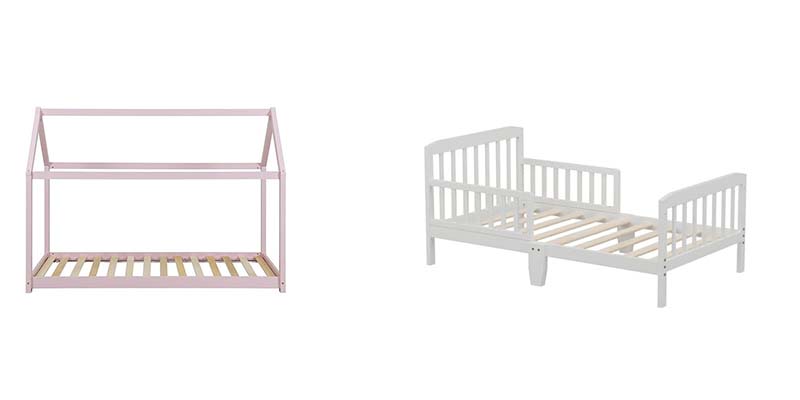
| Feature | Montessori Bed | Traditional Toddler Bed |
| Design & Height | Low-profile, often floor-level mattress or minimal platform | Raised frame with partial guardrails and often themed designs |
| Independence Focus | Encourages child-led movement and decision-making | Provides clear boundaries with supervised independence |
| Room Requirements | Requires full child-proofing and open floor space | Functions safely within a partially child-proofed room |
| Transition Ease | May involve adjustment period for sleep boundaries | Familiar crib-like feel can ease emotional transition |
| Long-Term Use | Adapts easily from infancy through early childhood | Often outgrown more quickly, requiring another bed later |
| Parental Involvement | Less hands-on once routines are established | May require more direct supervision at sleep times |
A Montessori bed works best for families committed to nurturing independence and willing to adapt the entire room to accommodate their toddler’s newfound freedom. Its minimalist, accessible design encourages self-directed sleep habits and seamless integration into a child-centered home.
In contrast, a traditional toddler bed may better suit families looking for structure and familiarity, especially if their child finds comfort in enclosed spaces or needs a clearer boundary between sleep and play areas.
Your decision may also reflect practical considerations like room size, budget, and readiness for extensive child-proofing. While a Montessori bed offers long-term flexibility, a traditional bed might feel more manageable in smaller or multi-use spaces. Neither option is inherently superior—each serves different needs with care and intentionality.
Is a Montessori Bed Right for Your Family?
One of the first factors to consider is your home environment. Montessori beds thrive in spaces that can be fully dedicated to a child’s exploration and safety. If you have the ability to child-proof an entire room—anchoring furniture, securing cords, and removing potential hazards—this approach can be wonderfully effective. However, if your living situation is temporary, shared, or limited in space, the extensive preparation required might feel overwhelming or impractical.
Your child’s personality plays an equally important role. Some toddlers are naturally cautious and respond well to the independence offered by a floor bed, using their freedom to explore calmly or rest when needed. Others may be more impulsive or energetic, and without physical boundaries, they might embark on frequent nighttime adventures or experience disrupted sleep.
Your parenting philosophy and daily rhythm also matter. Montessori beds are just one element of a larger philosophy that emphasizes child-led learning and honors the child’s autonomy. If these principles resonate with you, the bed can be a natural extension of your lifestyle. But if your days are highly structured or your patience for toddler-led pacing is limited, the flexibility of a Montessori bed might sometimes feel challenging.
Finally, think about the practicalities of implementation. Are you prepared to gently guide your child through the transition, even if it involves missed naps or extra patience at bedtime? Does your schedule allow for the consistency required to help your toddler adapt to their new freedoms?
Conclusion
The journey of choosing the right bed for your toddler is about more than just selecting a piece of furniture—it’s about shaping an environment that supports your child’s growth, independence, and well-being.
As we’ve explored, Montessori beds offer a unique approach centered on freedom, trust, and respect for the child’s capabilities, while traditional toddler beds provide structure, familiarity, and clear boundaries.
Your decision will likely reflect what matters most to your family: whether it’s the desire to foster early independence or the need for a secure and straightforward transition from the crib. Perhaps it’s a blend of both, adapted to your child’s unique temperament and your home’s practical realities.
Recommended Related Articles:

